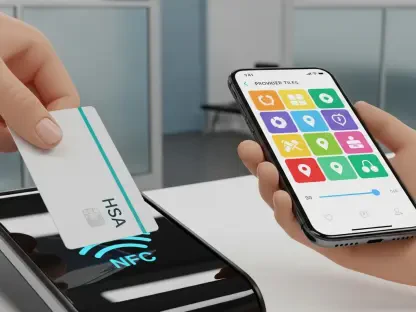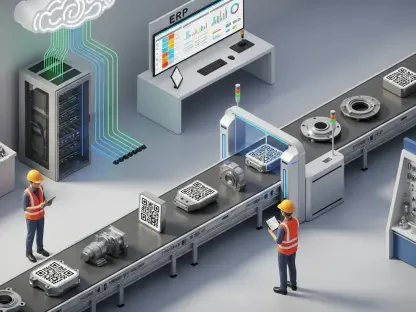As a trailblazer in the realm of human resources technology, Marco Gaietti brings a wealth of knowledge from his decades-long career in management consulting. With expertise spanning strategic management, operations, and customer relations, Marco has been instrumental in exploring innovative solutions to modern hiring challenges. Today, we dive into his insights on how AI is reshaping the recruitment landscape, making it more equitable and personal. Our conversation touches on the inspiration behind integrating AI into hiring, the surprising candidate feedback on chat-based interviews, strategies to reduce bias and anxiety, and the broader impact on diversity and accessibility in the hiring process.
How did the idea of using AI in hiring come about, and what gaps in traditional recruitment did you see that AI could address?
The inspiration to use AI in hiring stemmed from a clear need to address inefficiencies and inequities in traditional recruitment. We noticed that conventional methods often placed undue stress on candidates through rigid formats and subjective evaluations. There was also a significant lack of scalability—hiring at volume often meant sacrificing personal engagement. AI offered a way to streamline the process while maintaining, or even enhancing, a sense of fairness and individuality. It allowed us to focus on what candidates had to say rather than how they presented themselves in a high-pressure, face-to-face setting.
What is it about a chat-based AI interview format that seems to resonate so strongly with candidates?
Candidates have responded incredibly well to the chat-based format because it feels conversational and low-pressure. Unlike traditional interviews, where you’re on the spot, this format lets them think through their responses and express themselves in their own words. It’s untimed, so there’s no rush, and being text-based, it strips away superficial judgments based on appearance or voice. That freedom to be authentic, combined with the simplicity of the interaction, often makes candidates describe the experience as respectful and even human-like.
In what ways does a text-based AI interview help minimize anxiety and bias compared to more conventional methods?
The text-based format is a game-changer for reducing anxiety and bias. When you remove elements like video or voice, you eliminate snap judgments based on accents, physical appearance, or even nervous body language. Candidates can focus purely on their thoughts and qualifications. Additionally, the lack of time constraints means they aren’t racing against the clock, which levels the playing field for those who might need a moment to process or who have different communication styles. It’s about creating a space where the focus is on content, not delivery.
Why do you think more women and diverse candidates are drawn to apply for roles when they know AI is part of the assessment process?
I believe it comes down to a perception of fairness. Many women and diverse candidates have historically faced unconscious bias in hiring, whether it’s through tone, body language, or other subjective cues in face-to-face interviews. Knowing that an AI system is evaluating their responses based purely on data and content—without those human biases—can feel like a safer, more equitable opportunity. It signals that their skills and ideas are what matter most, which encourages more people to throw their hat in the ring.
How does your approach ensure accessibility and equity for candidates with disabilities during the hiring process?
Accessibility has been a core focus for us. We’ve designed the platform with features like compatibility with screen readers and voice-to-text options, ensuring that candidates with visual or motor impairments can engage fully. The untimed nature of the interviews also helps those who might need extra time due to cognitive or physical differences. On the equity side, we continuously audit the AI to prevent unintended biases in how responses are scored, striving for a process where everyone has an equal shot based on their merits, not their circumstances.
Candidates often describe AI interviews as feeling ‘human’ and ‘respectful.’ What elements of the design contribute to that perception?
It’s really about intentional design. We’ve structured the chat to mimic a natural, supportive conversation rather than a cold, robotic Q&A. The language is friendly and encouraging, and every candidate receives personalized feedback, regardless of the outcome. That acknowledgment—showing them their input was valued—restores a sense of dignity. When you’re transparent and give people space to express themselves, it fosters a connection that feels surprisingly human, even if it’s powered by technology.
How does a positive candidate experience during the hiring process influence broader business outcomes like retention or brand perception?
A positive candidate experience is far more than just a feel-good moment—it’s a strategic asset. When people feel seen and fairly assessed, they’re more likely to align with roles that fit their values and the company’s culture, which boosts retention down the line. It also shapes how they view the brand. Even if they don’t get the job, a respectful process leaves them with a good impression, often turning them into advocates who speak positively about the company. We’ve seen that firsthand in the feedback, where the hiring experience directly reflects on the employer’s reputation.
What’s your forecast for the role of AI in hiring over the next decade, and how do you see it evolving to balance technology with human connection?
I’m optimistic about AI’s trajectory in hiring over the next ten years. I think we’ll see it become even more sophisticated in personalizing interactions while maintaining fairness at scale. The evolution will likely focus on refining how AI supports human decision-making—acting as a tool to cut through noise and bias, rather than replacing the human touch. We’ll probably see tighter integration of ethical guidelines and transparency to build trust, ensuring AI amplifies connection rather than diminishes it. The goal will always be to enhance the human element, not overshadow it.









